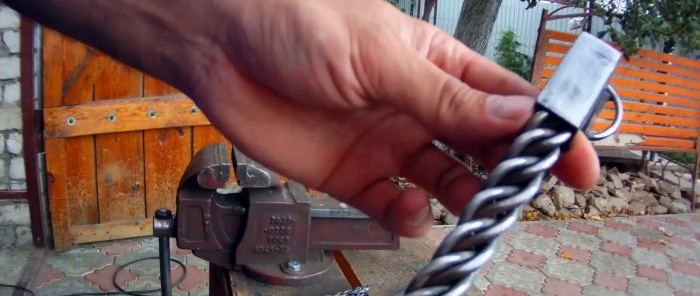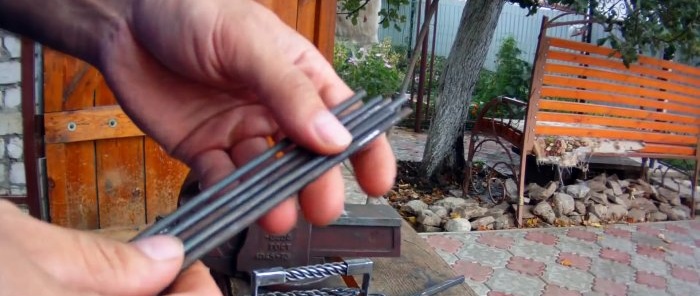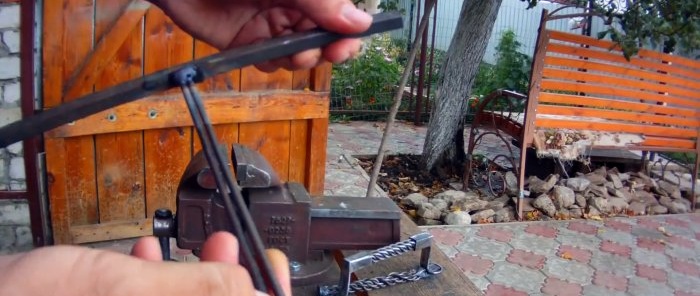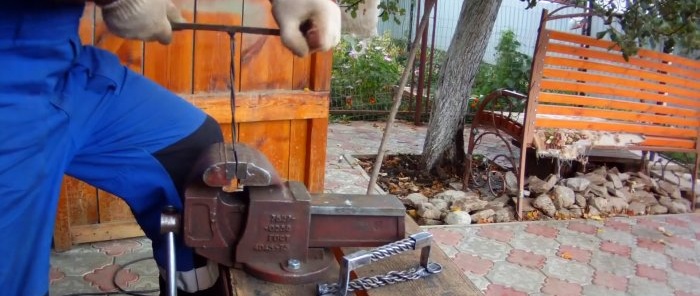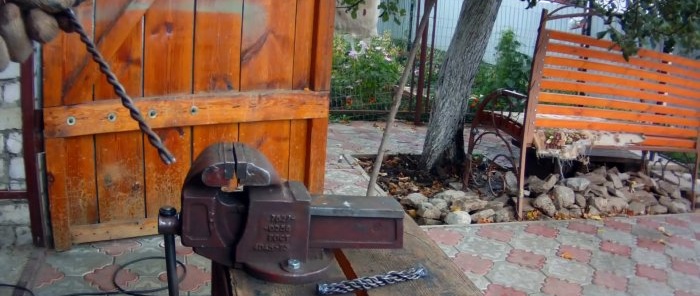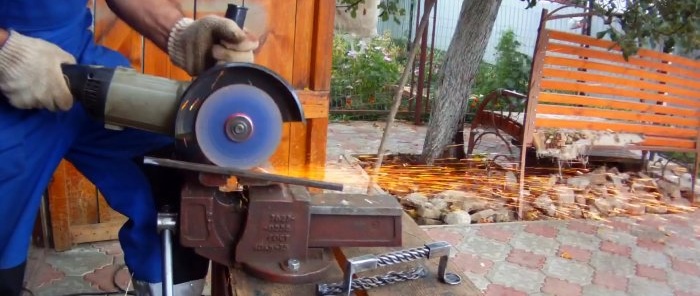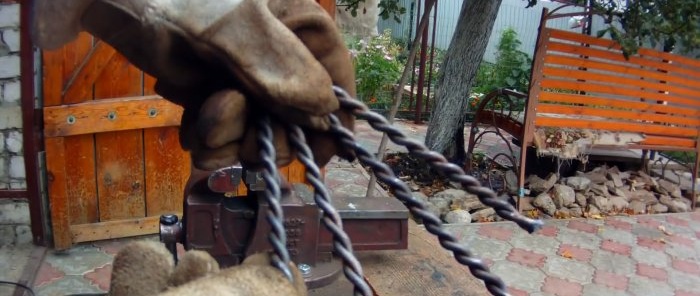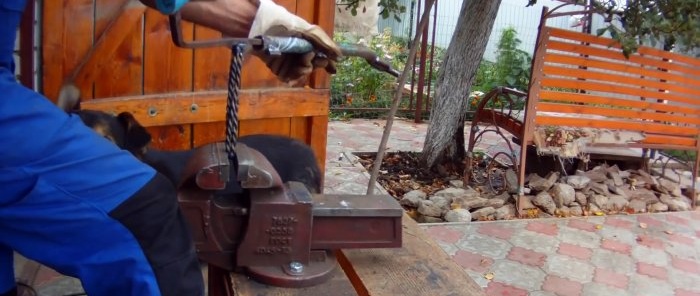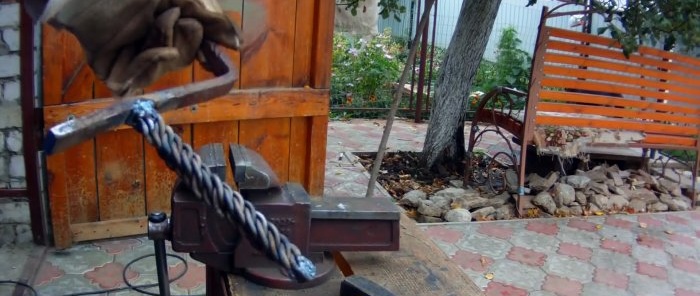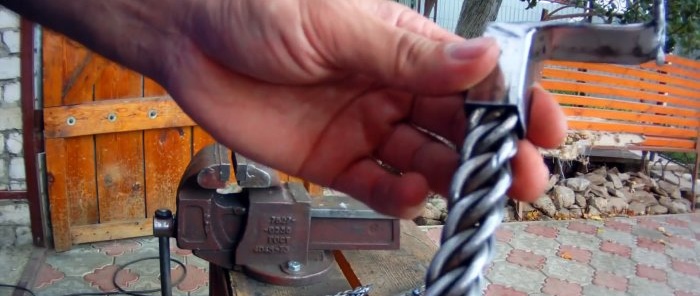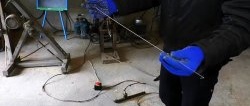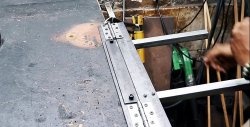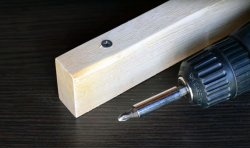We make decorative twisting of wire without tools or forging
The decorative wire twisting technique is widely used to make door handles, wrought iron gate decorations and staircases. At first glance, such elements are very difficult to manufacture and are made exclusively by blacksmiths or on special machines. In fact, everything is much simpler than it seems. You can make decorative twisting of wire with your own hands using ordinary metalworking tools.
To twist by hand without special equipment, you need to use a soft, thin wire. When making door handles, a cross-section of 4 mm is sufficient. The wire is cut into 8 pieces of equal length. For a door handle, 200 mm is enough, for decorations of gates and gates you will need larger pieces.
Next, you need to weld 2 twigs at right angles to any pipe, round timber or other scrap metal.You need to get a T-shaped blank in which the metal welded to the wire will serve as a temporary handle.
After this, the free edge of the double wire is clamped in a vice. Then, turning the welded handle, you need to twist it.
The number of revolutions depends on the softness of the wire metal. For 200 mm, 5-7 twists are enough. The fewer there are, the higher the likelihood of a positive outcome.
After twisting, the welded temporary handle is cut off with a grinder.
So you need to prepare 4 double pieces of 8 wire rods. It is important to perform all twists in one direction.
Now you need to weld the previously made 4 pigtails to the temporary handle. They are placed in a square. It is advisable to use the longest handle possible, which will make it easier to rotate. It can be extended with pipes. Next, the edge of the braids is clamped in a vice and rotation is performed again, but in the opposite direction. It's important not to overdo it here. If you twist the workpiece too many times, it will bend in an arc or the wire will break.
The decorative twist is then cut from the temporary handle. If necessary, you can straighten it a little with a hammer. Next, an even, straightened twist is welded to the eyes curved from the profile pipe and a handle for the door is obtained. It can also be welded to gates, wickets, railings, and balcony railings.
Materials and tools:
- wire 4 mm;
- vice;
- welding machine;
- any rolled metal (pipe, rod, angle, round timber);
- hammer;
- Bulgarian.
Stranding process
To twist by hand without special equipment, you need to use a soft, thin wire. When making door handles, a cross-section of 4 mm is sufficient. The wire is cut into 8 pieces of equal length. For a door handle, 200 mm is enough, for decorations of gates and gates you will need larger pieces.
Next, you need to weld 2 twigs at right angles to any pipe, round timber or other scrap metal.You need to get a T-shaped blank in which the metal welded to the wire will serve as a temporary handle.
After this, the free edge of the double wire is clamped in a vice. Then, turning the welded handle, you need to twist it.
The number of revolutions depends on the softness of the wire metal. For 200 mm, 5-7 twists are enough. The fewer there are, the higher the likelihood of a positive outcome.
After twisting, the welded temporary handle is cut off with a grinder.
So you need to prepare 4 double pieces of 8 wire rods. It is important to perform all twists in one direction.
Now you need to weld the previously made 4 pigtails to the temporary handle. They are placed in a square. It is advisable to use the longest handle possible, which will make it easier to rotate. It can be extended with pipes. Next, the edge of the braids is clamped in a vice and rotation is performed again, but in the opposite direction. It's important not to overdo it here. If you twist the workpiece too many times, it will bend in an arc or the wire will break.
The decorative twist is then cut from the temporary handle. If necessary, you can straighten it a little with a hammer. Next, an even, straightened twist is welded to the eyes curved from the profile pipe and a handle for the door is obtained. It can also be welded to gates, wickets, railings, and balcony railings.
Watch the video
Similar master classes
Particularly interesting
Comments (0)

